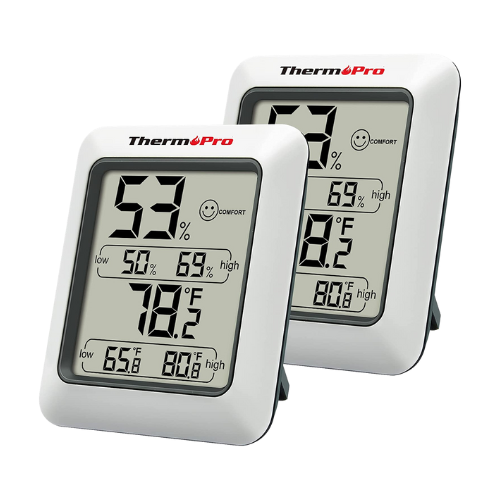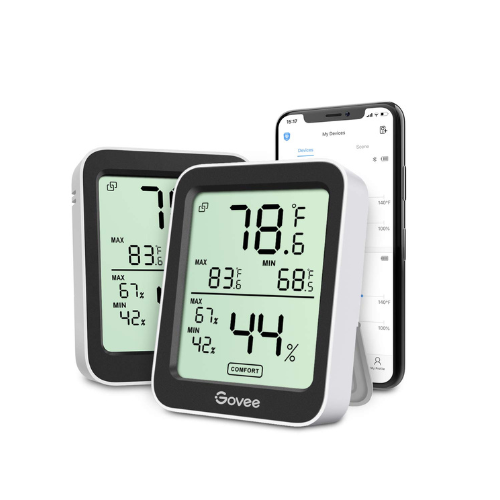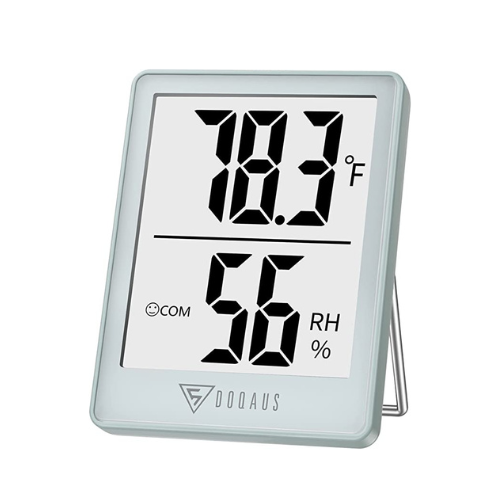What is a hygrometer
3 Key Takeaways:
🚀 A hygrometer is a device designed to measure relative humidity levels, or the amount of water vapor in the environment where it is placed.
🚀 There are different types of hygrometers, including psychrometers, hair hygrometers, mirror dew point hygrometers, capacitive hygrometers, and digital hygrometers.
🚀 Hygrometers are used in various settings such as saunas, museums, residential settings, and the HVAC industry to measure and control humidity levels.
You might have come across the term hygrometer at some point in time. If you are still unsure about what is a hygrometer, what a hygrometer measures, and how a hygrometer works, in this article we will discuss in brief the modern hygrometers, their types, and how they function. Let us get started!
What does a hygrometer measure?
A hygrometer is a highly efficient device designed to measure relative humidity levels. A hygrometer can measure the relative humidity level of air, or simply the amount of water vapor in the environment the hygrometer is placed. How a hygrometer measures low relative humidity level or high humidity can depend on the type.
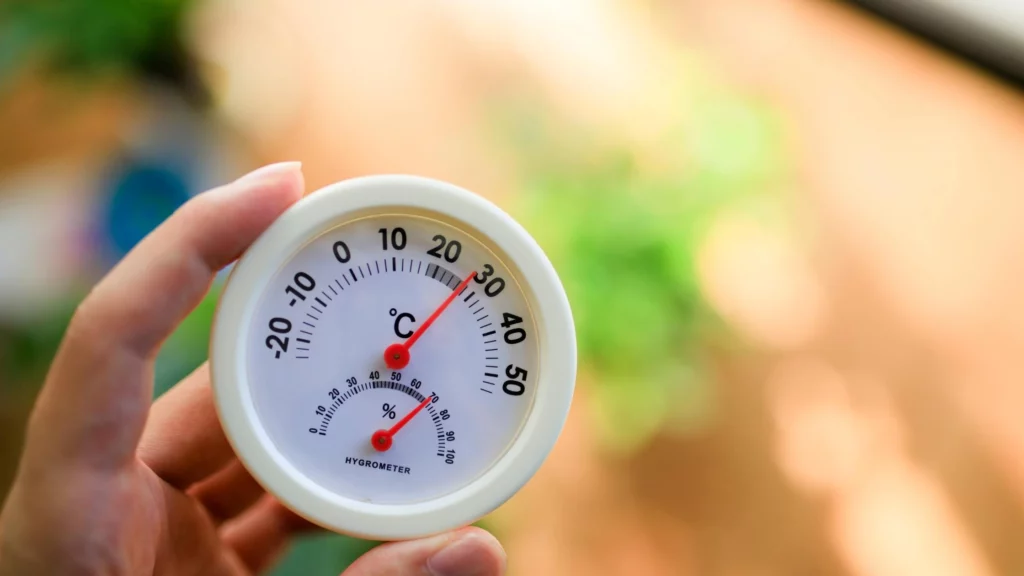
To measure relative humidity, there is a psychrometer and hair hygrometer. You will also come across much more complex hygrometer devices. A mirror dew point hygrometer measures humidity by making use of the dew point temperature of condensation. There are also modern hygrometers that measure relative humidity by detecting changes in electrical resistance and electrical capacitance.
Capacitive hygrometers, digital hygrometers, and other hygrometers have their specific roles in measuring humidity. The manner in which they determine humidity and make records of humidity measurements might be different, however, they have their specific role in humidity control. Saunas, museums, residential settings, and the HVAC industry make the best use of hygrometers to measure humidity.
Psychrometer
A psychrometer is used to take humidity measurements using two thermometers; dry and wet thermometers. Among the two thermometers, one is a dry bulb thermometer and the other is a wet bulb thermometer. By the process of evaporative cooling, the dry and wet thermometers measure relative humidity.

As the moisture content from the wet bulb begins to evaporate, the temperature will decrease. The difference in temperatures between the wet and dry bulb thermometers is computed using psychrometric charts. With this difference, the wet and dry bulb thermometers help to measure humidity levels.
Dew point hygrometer
The most precise instrument available to take humidity measurements is the condensation or the cooled mirror dew point temperature hygrometer. To measure humidity, this device makes use of electronic feedback. A chilled mirror is exposed to the open air. You can notice that electronic feedback controls the temperature of the chilled mirror, also keeping the dynamic equilibrium between the evaporation and condensation on the mirror.

The condensation on the chilled mirror surface is detected using an optoelectronic mechanism. With the help of the optoelectronic mechanism, measuring takes place of the dew point temperature or the temperature where the air is so saturated that it is unable to hold water vapor any further, that condensation occurs.
Hair tension hygrometer
Another interesting device that is used to measure humidity is the hair hygrometer. The hair hygrometer uses the hair under tension phenomenon. You might observe that when relative humidity levels increase, hair will become longer, With low relative humidity levels, hair will become shorter. The hair hygrometer makes use of human hair or horse hair to measure the readings.

Strands of human hair or horse hair attached to the levers of the hair hygrometer will magnify even the smallest changes in length. An ink pen and a rotating cylinder are used to measure the humidity recordings throughout the day and open down the hydrograph. It is important to remember that a hair hygrometer, irrespective of whether it uses human hair or horse hair are not accurate devices to take humidity measurement. They have been found to record errors at very high humidity levels and low relative humidity levels as well as mites, musty smell, etc.
How to calibrate a hygrometer?
Calibrating the hygrometer is simple. You can always seek out professional assistance to calibrate the device, preferably from the company where you purchase your hygrometer. The steps are as follows:
- Take a clean plastic bottle cap and add a teaspoon of table salt into the cap.
- Add just a few drops of water to the cap, just enough to make a paste-like mixture.
- Place the bottle cap with the salt mixture and the hygrometer into a ziplock bag and seal it.
- Allow this to sit undisturbed for 6 to 8 hours.
- After 8 hours, make note of the reading on the hygrometer before you open the bag.
- If the hygrometer does not read 75% but rather reads higher or lower than 75%, adjust it to register at 75%.
- The device will display the correct reading after this calibration.
What is a normal hygrometer reading?
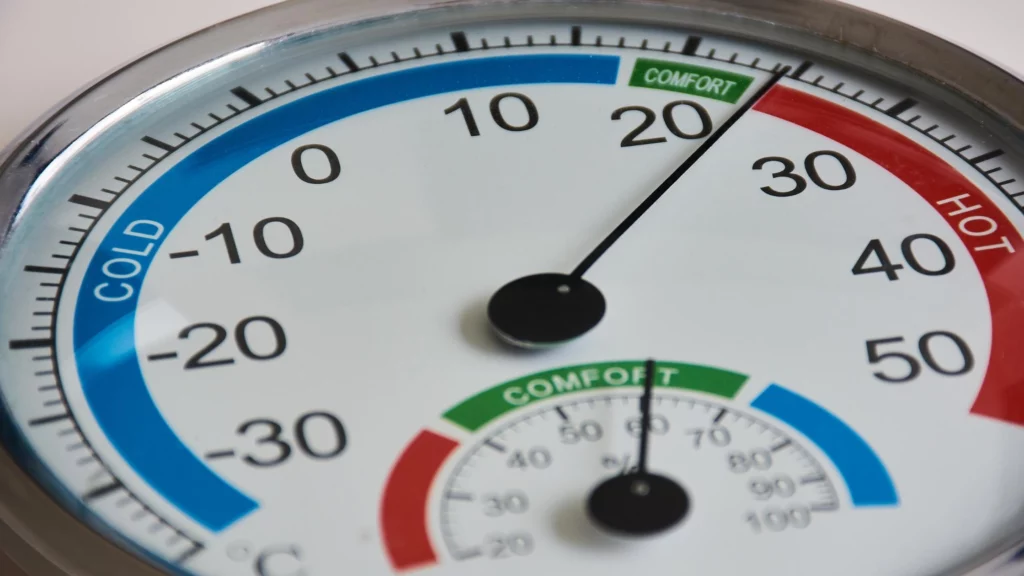
It is highly recommended that the normal indoor humidity reading should be within 40% to 60% relative humidity. A humid environment that has relative humidity levels that are higher or lower than this will promote the growth of mold and the spread of other airborne allergens. Your hygrometer must be kept a check if it is measuring these normal levels of relative humidity.
How Does a Hygrometer Work?
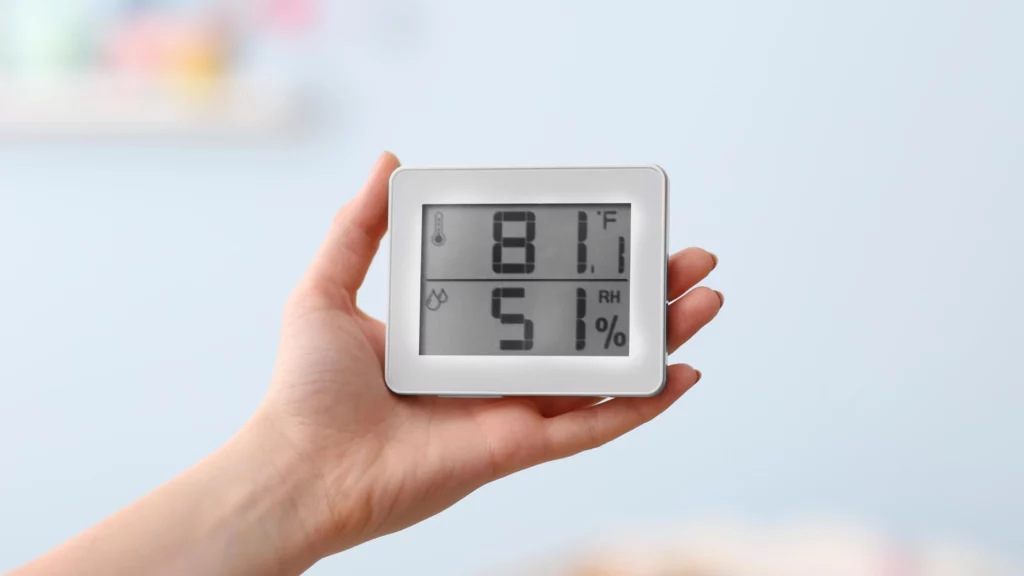
Hygrometer works with the phenomenon of evaporative cooling. When water evaporates or moisture evaporates from a surface it will become cold. As the water evaporates or the moisture evaporates and the water molecules absorb heat from the surface, making it cold by the process of evaporative cooling, the wet bulb will exhibit a lower temperature in comparison to the dry bulb.
Which are the 3 Hygrometer Brands We Recommend?
We are aware of the confusion that exists to clearly understand what is a hygrometer and which model will best meet your requirements. There are plentiful models of digital hygrometers available in the market. Here we have the 3 best hygrometer brands that we recommended after having carefully selected them with a thorough study of their pros and cons.
1. ThermoPro TP50 Digital Hygrometer
The first model on the list is a digital hygrometer that is designed with several beneficial features that make it possible to measure humidity levels in humid environments with ease. Let us take a look at the features that make this model the best device to measure humidity and excess moisture in the air.
The Air comfort indicator is the perfect humidity meter that comes even with the humidity level icon. This makes it easy to indicate the ambient air condition and the level of moisture in the air. By indicating Dry, Comfort, or Wet the humidity level sensor ensures that you can know the existing condition of the air in one glance.
The high accuracy of ±2~3%RH and ±1°F of the inside thermometer in the ThermoPro TP50 makes it an ideal choice to measure even fluctuating readings. With this, even the latest changes in the humid environment are updated every 10 seconds. This highly efficient and accurate hygrometer will display even high temperatures and low temperatures.
Investing in ThermoPro TP50 is a smart solution to keep the home protected at all times against the effects of high humidity levels and low humidity levels. Continually monitoring and measuring humidity will enable you to act immediately when the moisture content in the air is high or low.
Are you interested in this smart and efficient hygrometer design for your home? Hurry now to Amazon.com to purchase ThermmoPro TP50 at the best offer price.
Pros and Cons of ThermoPro TP50 Digital Hygrometer
- A simple and effective choice to measure humidity in confined spaces.
- Keeps accurate track of the maximum amount of moisture content in the air.
- The readings are highly accurate.
- Continual humidity measurement helps to keep the space protected against effects of high and low humidity like dry skin, allergies, difficulty in breathing, etc.
2. Govee Hygrometer
The Govee Hygrometer has been rated as one of the best indoor hygrometers owing to its popular wireless design. The smart features and efficiency make this digital indoor hygrometer one of the best on the market.
The Smart App Control that comes in this model makes it possible to have real-time monitoring of the temperature and humidity. Govee Hygrometer is equipped to have a 262ft coverage that can provide you with all the necessary data from anywhere across your home.
The accuracy of the Govee Hygrometer is seamless with the built-in Swiss-made sensor. With this technology, the temperature is accurate to ±0.54°F and humidity is ±3%RH. This sensor also provides precise data every 2 seconds. Another interesting feature of the Govee Hygrometer is the provision to store and export data, going up to the last 2 years. The data download can be done effortlessly into your phone.
The compact size, lightweight design, prompt alert notification system, etc., are the other pros that the Govee Hygrometer offers. Do you want to bring home this hygrometer to measure moisture content in the environment with ease? Visit Amazon.com to learn more about this device and to purchase it at the best price.
Pros and Cons of Govee Hygrometer
- Compact device that can be used to measure humidity, temperature, and atmospheric pressure anywhere in the home with its Smart App Control.
- Takes measuring humidity to the next level with its data storing and downloading feature.
- Highly accurate facility to measure moisture content in the air with its built-in Swiss-made sensor.
3. DOQUAS Hygrometer
The last device on the list that we have to measure relative humidity is the DOQUAS Hygrometer. This indoor hygrometer is used to measure the relative humidity level, atmospheric pressure, and temperature of confined spaces with ease.
The accuracy of this device to measure relative humidity is attributed to its built-in smart temperature humidity sensor. With this, the indoor thermometer is accurate to ±1°F while humidity is ±5%RH. Moreover, you can be guaranteed that the DOQUAS Hygrometer can give you updated readings every 5 seconds.
The air comfort indicator in the DOQUAS Hygrometer comes with 3 face icons. They will indicate Dry, Comfort, and Wet air conditions. The other simple but efficient features that make it easy to measure humidity include; a 2.3-inch clear LCD display with large bold numbers, 3 mounting options, a CR2032 battery, etc.
Do you want to bring home the DOQUAS Hygrometer to measure relative humidity round-the-clock? Visit Amazon.com to avail of exciting offers on this device on purchase.
Pros and Cons of DOQUAS Hygrometer
- One of the best hygrometers used to measure humidity at home and other spaces.
- Perfection in reading the humidity levels and temperature of any space with its built-in smart temperature humidity sensor.
- Elegant and user-friendly features.
How to test humidity without hygrometer?
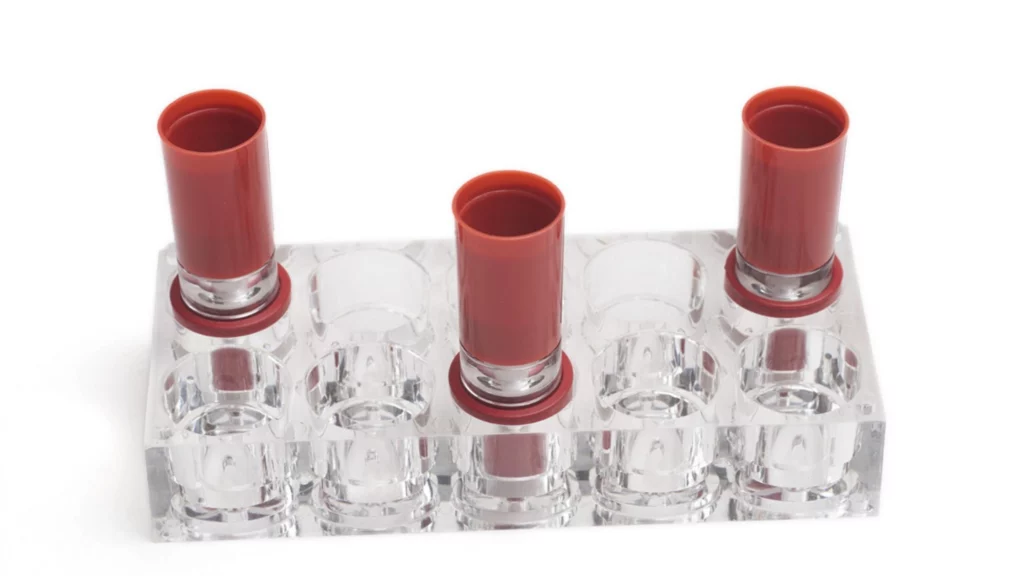
Testing the humidity level and moisture in the air can be done with a simple home experiment using ice cubes. For this, place two to three ice cubes into a glass, add water to it, and now stir. Allow this to sit for a few minutes. If you notice that there is no moisture or condensation formed on the outside of the glass, it denotes that the air is dry and you need a humidifier. On the contrary, if you notice that the water on the outside of the glass has condensed it denotes that there is more moisture in the air around or the relative humidity is very high.
FAQ Section
1. Can you use your phone as a hygrometer?
Yes! Apps for both Android and iPhone are available to measure humidity levels on the go, anytime and any place. The humidity data is also readily available in several weather apps that are also downloadable on Android and iPhones.
2. What is the difference between a hygrometer and a humidity meter?
A hygrometer, that measures the humidity or the amount of water vapor in the atmosphere, is also known as the humidity meter or the humidity gauge. This calculation is done by measuring the temperature and constant pressure changes.
3. How do you know if the hygrometer is accurate?
Learning if the hygrometer is reading accurately reading can be done by conducting a simple home test.
- Take a damp towel and wrap it around the hygrometer for 30 to 45 minutes. Leave it undisturbed.
- Unwrap the towel after 45 minutes and read the humidity quickly.
- Your hygrometer will read 100% humidity if it is perfectly calibrated.
4. What type of hygrometer is best?
Although there are several models available for specific purposes, digital hygrometers are gaining popularity for everyday indoor use. The Govee WiFi Temperature Humidity Indoor Hygrometer has been rated the best in the market.
5. How often should you calibrate a hygrometer?
It is suggested that hygrometers must be calibrated when they are new, after which they can be calibrated once a year.
Wrapping Up
That’s a wrap on the article. We trust the article helped you understand what is a hygrometer, the types, and how it works to measure the relative humidity of a place. Share with us in the comments below if you have a hygrometer at home and the model that best works for you.

About The Author
Olivia — a self-confessed air quality addict — is a home climate enthusiast, fresh air advocate, and someone with deep personal experience and knowledge about mold extermination. Her work was mentioned in countless notable humidity publications. Previously she was an editor at Mold Remediation.
